Alabama is one of the most ecologically diverse states in the USA. This state has over 60 different types of natural habitats and varied topography. Habitats in Alabama include forests, woodlands, prairies, glades, and wetlands. The climate is warm and humid, which is ideal for many species. Because of its topography and climate, Alabama has over 4,500 documented species. However, many species in Alabama are invasive. These invasive species can harm native species and even humans. By understanding these invasive species, you can start to recognize and play your part in reducing the population of invasive flora and fauna.

Here is a list of 11 of these invasive species in Alabama.
1. Chinese Privet (Ligustrum sinense)
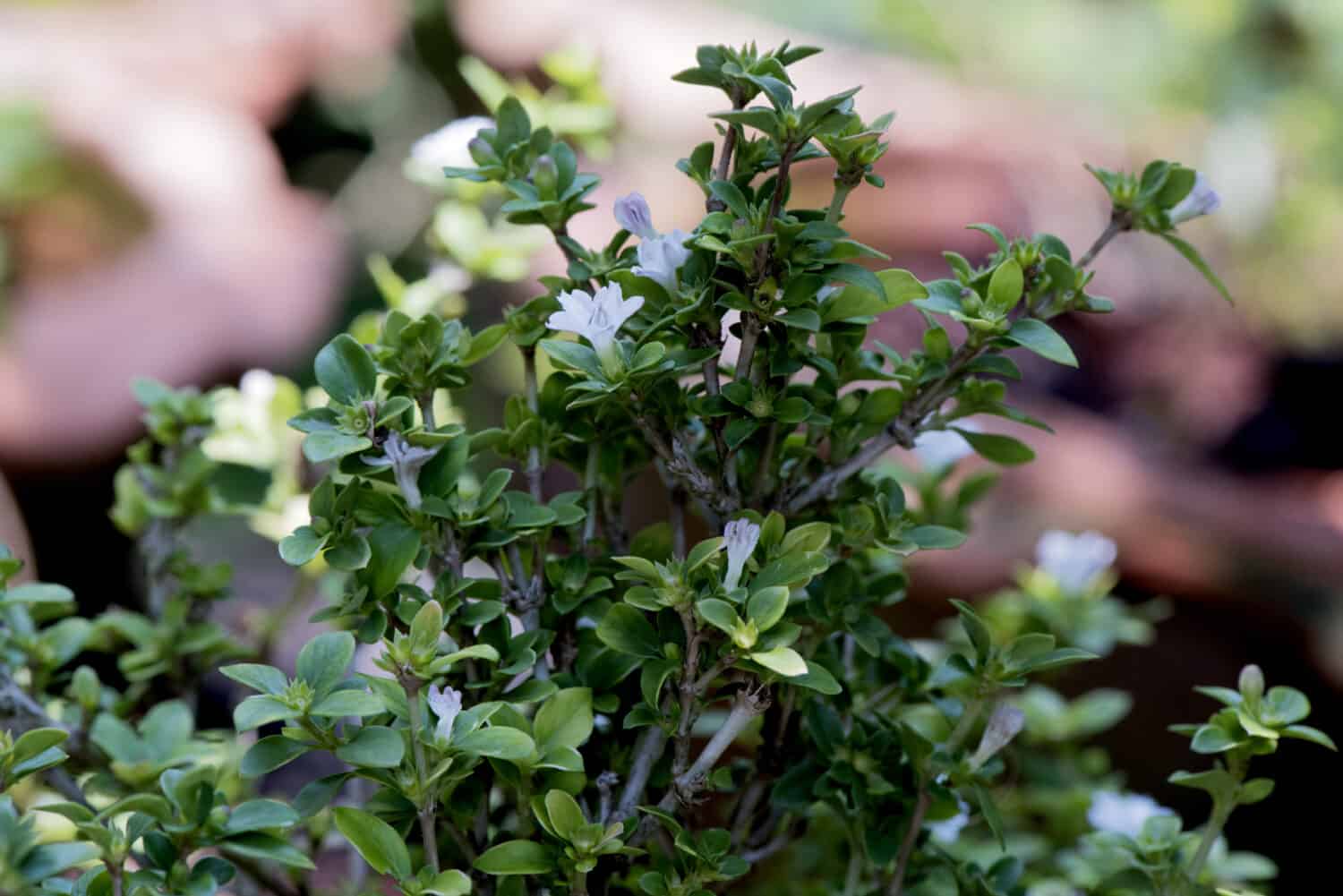
Native to Asia, Chinese privet is a fast-growing plant that is invasive in Alabama.
©wasanajai/Shutterstock.com
Chinese privet is native to China and some regions in Taiwan and Vietnam. Because of its ideal hedging purposes and attractive white flowers, this plant has been introduced to many regions around the world, including Alabama, where it has since become considered invasive. This fast-growing plant is evergreen and can grow to heights of around 20 feet tall. It has dark, oval-shaped leaves and small white flowers which grow annually.
Chinese privet is invasive due to its rapid growth and spread, as well as its lack of natural predators. Because this plant grows very densely, it can outcompete or smother native plant populations and easily take over an area. As well as this, Chinese privet produces certain chemicals which can inhibit the growth of other plants.
Various methods are in place to control the spread of this invasive plant in Alabama. These include manual removal, chemical control, and habitat restoration to provide the right environment for native foliage to regrow in its place.
2. Golden Bamboo (Phyllostachys aurea)

A common ornamental plant, golden bamboo is another invasive plant species in Alabama.
©jhonny marcell oportus/Shutterstock.com
Golden bamboo is a species of bamboo native to China and Japan. This bamboo is a very popular ornamental plant but can easily spread beyond control. Golden bamboo, as its name implies, has golden-yellow stems and lush green leaves. This plant can grow up to 25 feet tall.
Golden bamboo is an invasive species in Alabama because of its ability to spread and grow very quickly and outcompete other native species of plants. It also has a lack of natural predators to feed on its foliage and control its growth. There is also a lack of natural diseases that affect this plant.
Control methods used in Alabama include herbicides to kill entire groups, barrier installation to prevent the roots from spreading outward, and simply the physical removal of the plant. However, once established, golden bamboo can be very hard to eradicate, so combining two or more of these control methods works best.
3. Tallow Tree (Triadica sebifera)
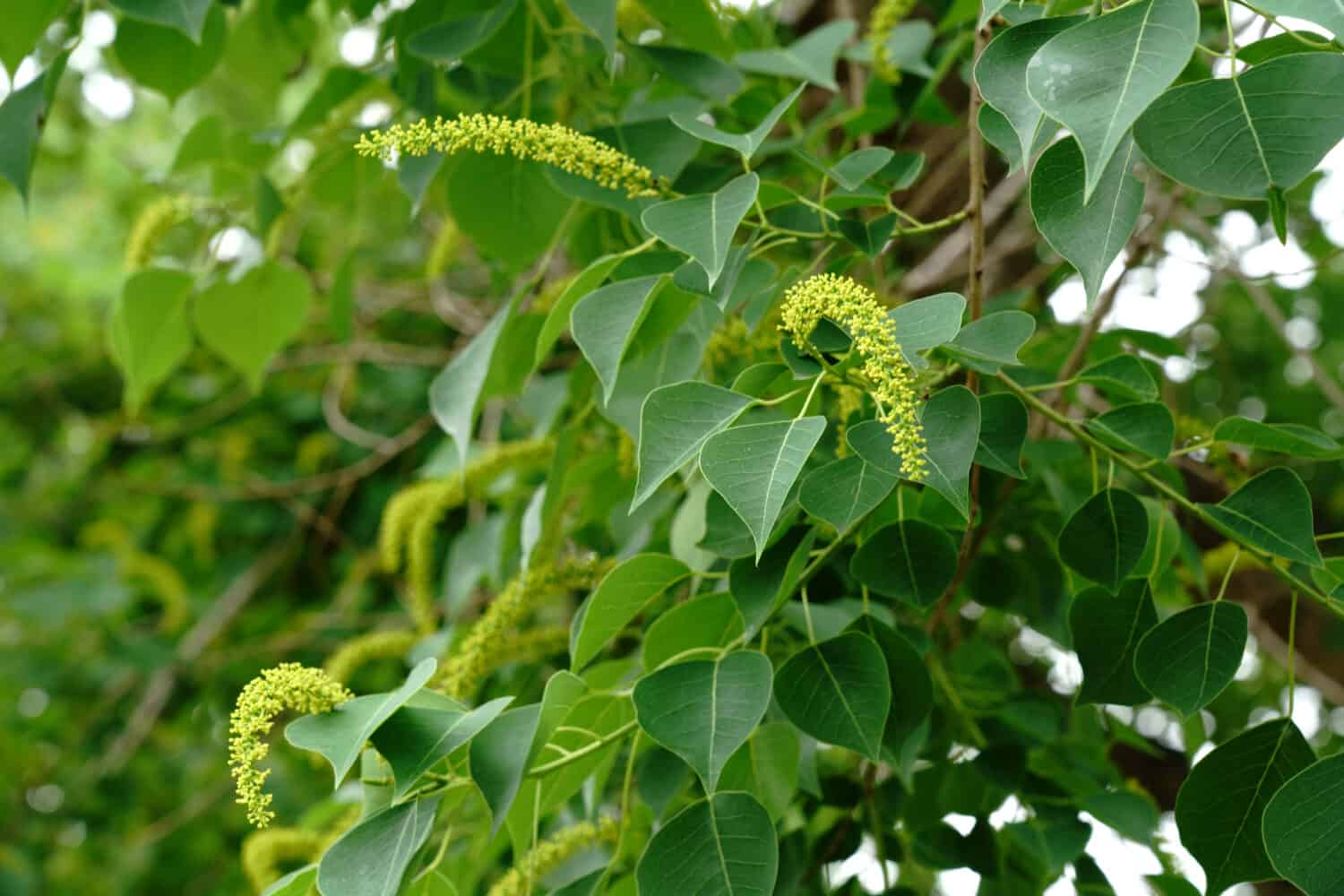
Growing up to 60 feet tall, the tallow tree is invasive due to its high reproductive rate.
©High Mountain/Shutterstock.com
Also native to China and Japan, the tallow tree is a medium-sized deciduous tree that can grow up to 60 feet tall. Its leaves can resemble a duck’s foot or mitten and are glossy and green during the spring and summer months. They grow seeds with high oil content and can be used to make tallow, hence the tree’s name.
The tallow tree is invasive in Alabama due to its aggressive growth and the negative impacts it has on the habitat it grows in. The tree has a high reproductive rate, producing thousands of seeds per year, and can spread and establish itself very easily. This leads to the tree outcompeting native plantlife for resources and habitat.
Removal of these trees is an effective method for controlling their population and spread, especially when combined with the use of herbicides. Biological control methods of introducing natural predators is another option that is currently being explored as a long-term solution to the tallow tree infestation.
4. Autumn Olive (Elaeagnus umbellata)
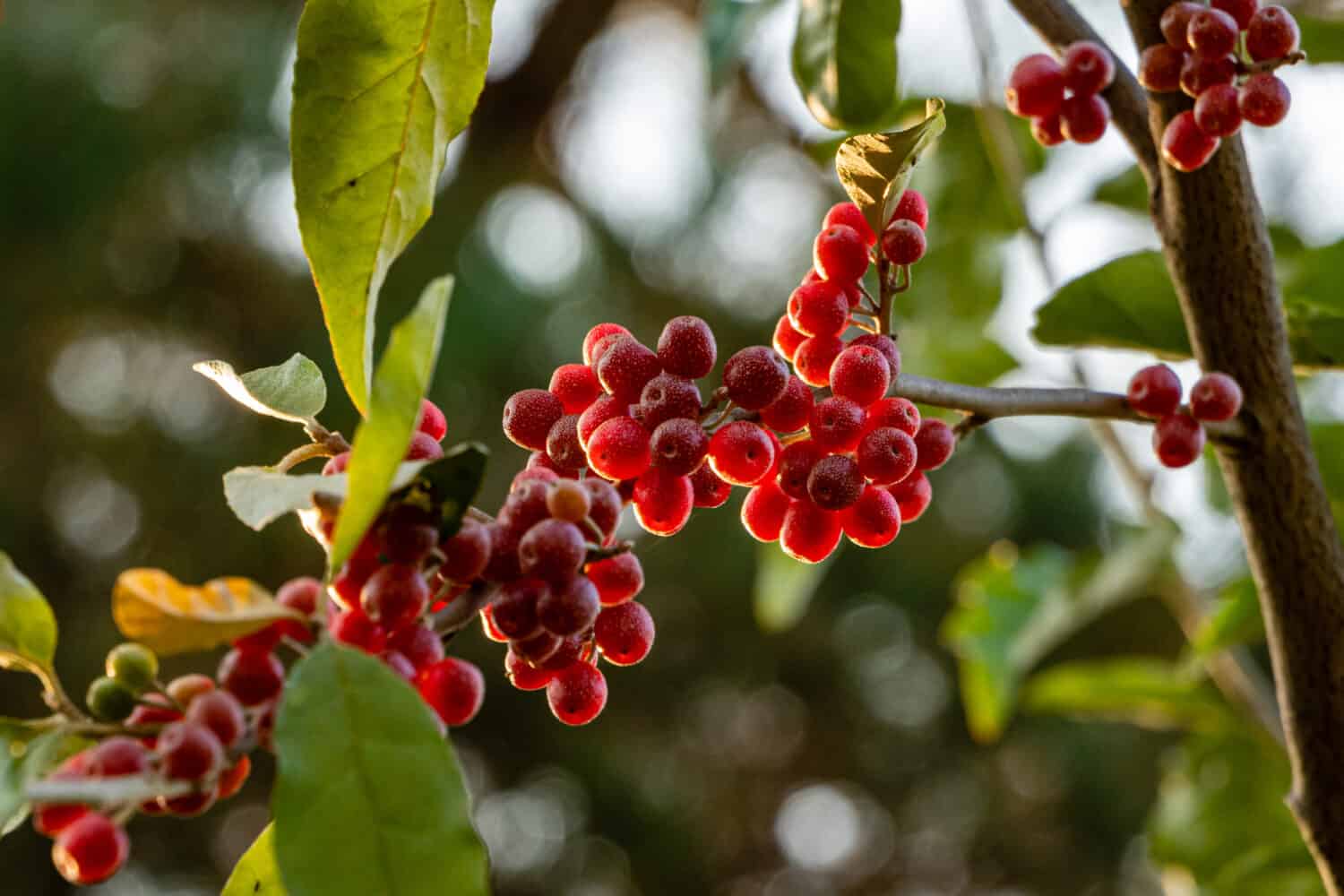
Many birds and animals eat the fruit produced by the autumn olive.
©Alexander Denisenko/Shutterstock.com
Autumn olive is a shrub that originated from Eastern Asia and was introduced to the United States in 1830. This shrub was introduced for its many properties, including ornamental, windbreak, and restoration. This shrub is extremely hardy and can grow up to 11 feet tall. It has a dense crown with flowers that are white to yellow. The plant also has sharp thorns. The fruit produced is red with dots and is eaten by many birds and animals.
Autumn olive is considered an invasive species in many states, including Alabama. The biggest issue is that the plant harms native species. Not only does the plant outcompete and displace native flora, but it also shades out plants and changes the chemistry of the soil! Lastly, autumn olive is spread easily, as birds that eat the fruit disperse the seeds. The hardiness of the plant makes it difficult to control.
Control measures for the autumn olive include mechanical, chemical, and a combination of the two. A mechanical measure is cutting the autumn olive at its main stem. A chemical measure is using herbicides to prevent resprouting. A combination of the two measures is the most effective at controlling the autumn olive.
5. Lionfish (Pterois volitans)

Feeding on native fish and negatively impacting the surrounding habitats, lionfish are invasive in Alabama.
©bearacreative/Shutterstock.com
The lionfish are venomous fish that are native to the Indo-Pacific Ocean. These fish have now spread from their home to many waters around the world, including Alabama’s waters. These fish are colorful, with interesting patterns and numerous spines. The colors serve as a warning to potential predators. They have thick bodies and short tails. Adult fish can grow up to 18 inches in length. However, dwarf varieties will only reach around 6 inches in length. Lionfish are voracious predators and eat small fish, invertebrates, and mollusks.
The lionfish are considered invasive in Alabama due to their resistance to predators and high reproduction rate. They also feed on native fish and can negatively affect reef habitats and health.
Unfortunately, due to the lionfish’s depth range, which can be up to 1,000 feet, wide range of habitat, and larvae dispersal, large-scale eradication is not possible. Measures such as spearfishing tournaments can help reduce the population growth of the lionfish. Lionfish are also edible, so they can be fished for food. However, because of their toxins, they must be handled with care.
6. Nutria (Myocastor coypus)
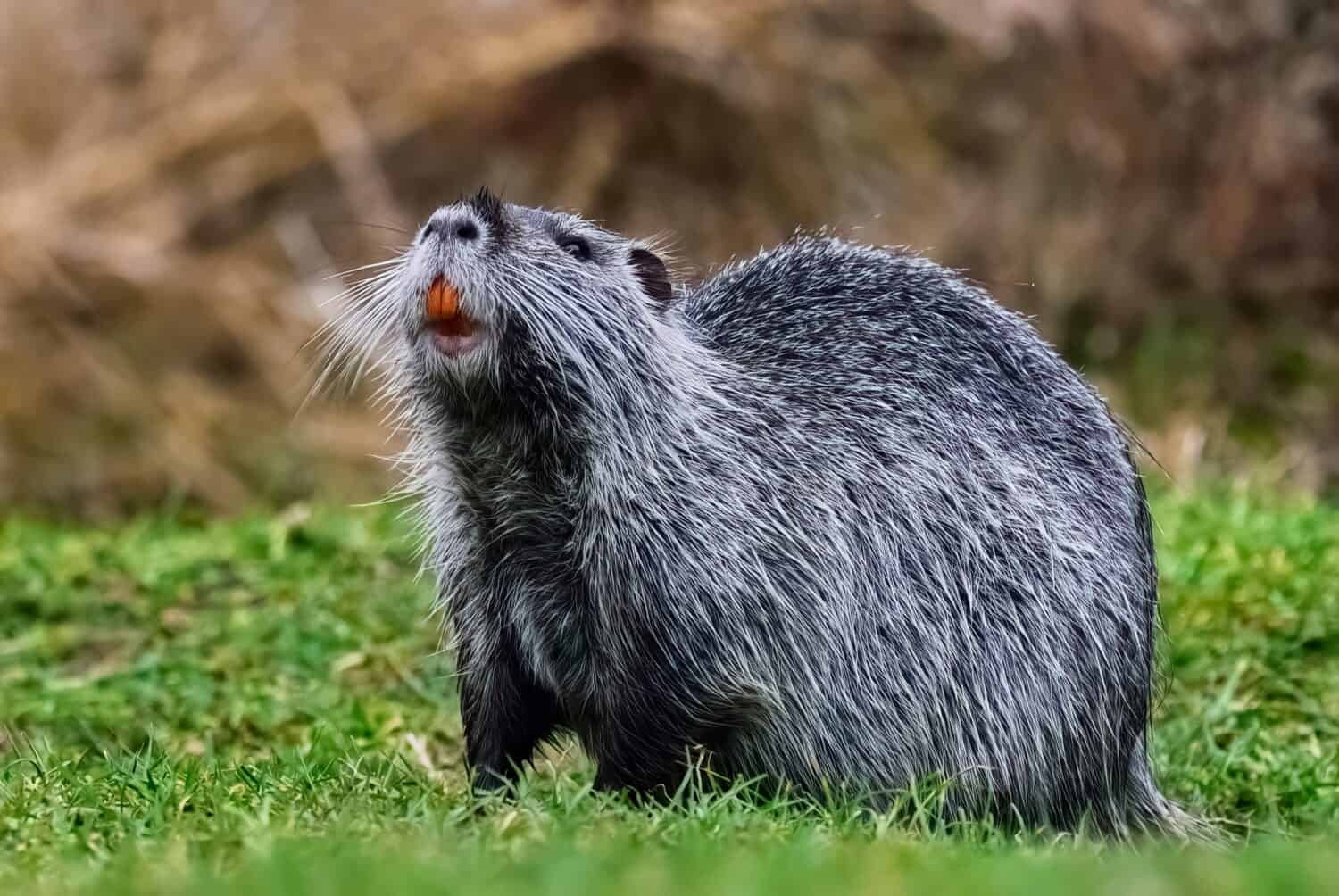
A semi-aquatic rodent, the nutria causes damage to lakes, riverbanks, and levees.
©Robert Adami/Shutterstock.com
The nutria, also known as the river rat, is a semi-aquatic rodent native to South America. Nutria are large rodents that weigh between 15 and 20 pounds and reach a length between 30 and 40 inches. They have dark brown fur, which is slightly lighter in shade on the abdomen. Their front legs are small, while their hind legs are larger with partially webbed feet. Their tails are round and hairless, making them look more like a rat than a beaver. Lastly, they have extremely large incisors. These rodents are herbivores and eat vegetation found on land and in the water. The diet of the nutria includes cattails, reeds, bulrush, roots, and sedges.
The reason nutria is considered invasive in Alabama is due to the damage this rodent causes to lakes, riverbanks, and levees. This is because of their eating, digging, and rooting habits. The nutria also feeds on native plants, disrupting the native ecosystem. Lastly, these creatures host pathogens that are capable of infecting humans.
Control methods for the nutria include wire tubes and installing bulkheads. Wire tubes can be used to protect plants, while bulkheads can help protect river banks from eroding. If these measures fail to protect the ecosystem, more lethal measures can be used to reduce the population of the nutria.
7. White-Spotted Jellyfish (Phyllorhiza punctata)

Currently, there are no effective measures to manage the invasive white-spotted jellyfish.
©Digitalphaser/Shutterstock.com
The white-spotted jellyfish is also commonly known as the floating bell, Australian spotted jellyfish, and brown jellyfish. This jellyfish is native to the western Pacific – more specifically, from Australia to Japan. These jellyfish can reach a bell diameter of up to 20 inches. They can be easily recognized by the large rounded bell that is semi-transparent and covered in white dots. Even the trailing tentacles have white dots. The diet of the white-spotted jellyfish mainly consists of fish eggs, larvae, and crustaceans.
The white-spotted jellyfish is considered invasive for a few reasons. These jellyfish multiply rapidly and consume large quantities of fish eggs and larvae. This reduces food availability to other species and negatively affects the fishing industry. These jellyfish also clog nets and damage fishing equipment, negatively impacting the shrimp industry. The white-spotted jellyfish does have a mild sting but is not a threat to humans.
There are currently no effective measures to manage the white-spotted jellyfish populations. This is because they are found in the open ocean. One way that can be effective is by capturing these jellyfish. However, the number of jellyfish in an area could be millions, and catching these jellyfish generates no revenue for fishermen.
8. Asian Tiger Mosquito (Aedes albopictus)
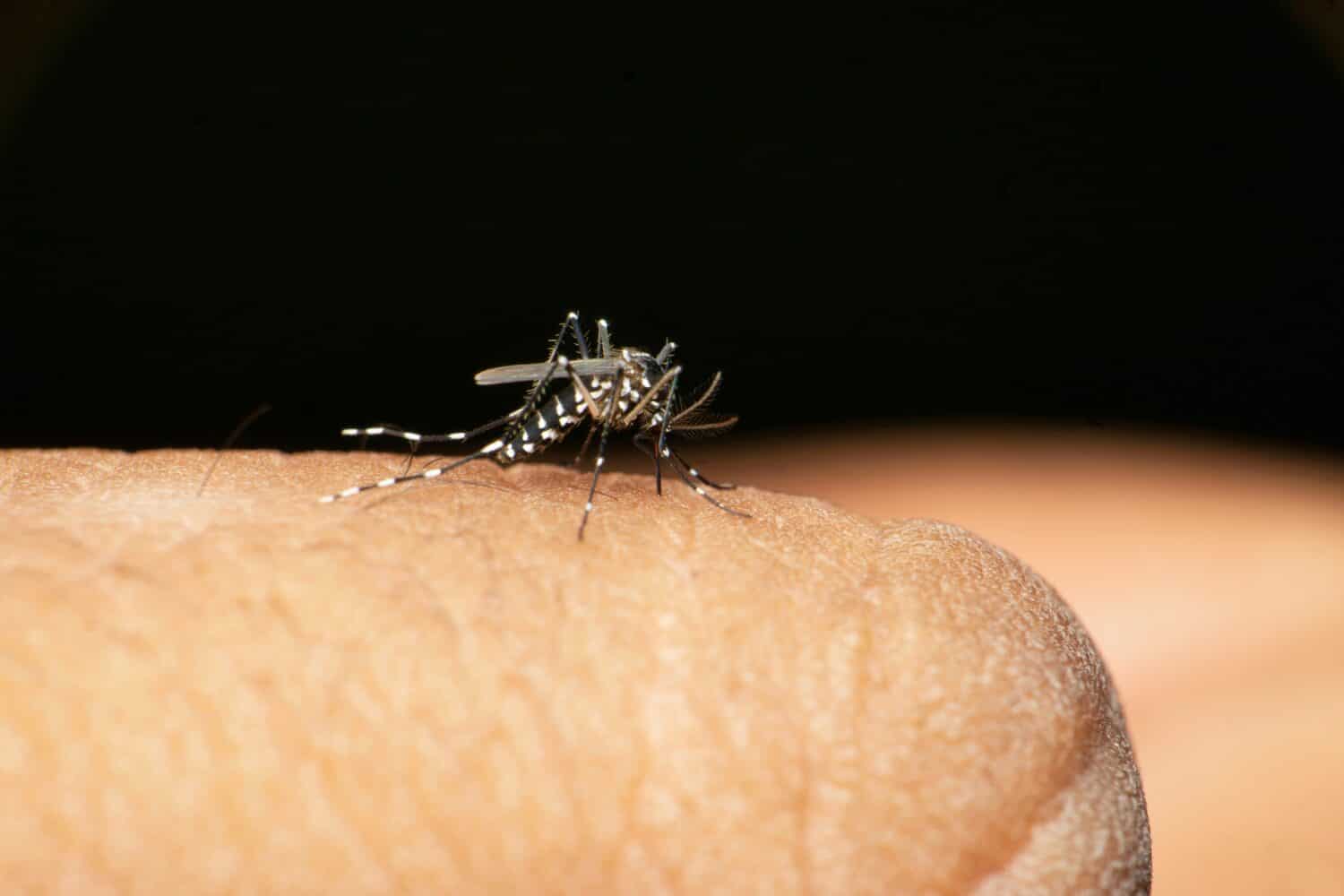
Due to its role as a vector for transmitting various diseases, the Asian
tiger
mosquito is an invasive species in Alabama.
©RealityImages/Shutterstock.com
The Asian tiger mosquito, also known as the forest mosquito, is native to Southeast Asia in tropical and subtropical areas. This mosquito is easily recognized by the white bands on its legs and body. The Asian tiger mosquito has a characteristic single white stripe from its head to the center of its back. This species is generally less than 0.4 inches long. Like other mosquito breeds, females require blood to develop their eggs. However, both the females and males feed on nectar and plant juices.
The Asian tiger mosquito is considered an invasive species mainly due to its role as a vector for the transmission of numerous viral pathogens. These mosquitos can transmit viruses such as chikungunya virus, dengue virus, Zika virus, and more. They also have aggressive human-biting behavior.
Control measures for the Asian tiger mosquito include the use of insecticides and removing breeding sites. Insecticides can provide temporary relief and reduce the risk of disease transmission. On the other hand, removing breeding sites is the most effective method of controlling Asian tiger mosquitos. This includes removing water-holding containers such as clogged rain gutters, tires, buckets, bottles, birth baths, pet food, and plastic tarpaulins. By removing standing water, the mosquitos will have fewer breeding sites, reducing reproductive rates.
9. American Bullfrog (Lithobates catesbeianus)

The largest frog in North America, the American bullfrog is invasive in Alabama.
©Tau5/Shutterstock.com
The American bullfrog is an amphibian native to the eastern parts of North America. This creature is the largest frog in North America and can grow between 3.6 and 6 inches in length and have a weight between 0.5 to 1.5 pounds. The skin of the American bullfrog is smooth and olive-green in color. The back of the frog has blotched brown markings, while the abdomen is whitish.
The American bullfrog’s diet is the main reason it is considered invasive. Its diet is diverse and consists of insects, worms, spiders, and even small fish. The American bullfrog is extremely hungry and, consequently, outcompetes native species for food and habitat. This bullfrog also reproduces rapidly as it can produce large numbers of eggs.
A few control methods are used to decrease the American bullfrog’s impact on the native environment. This includes removal programs, close monitoring of the population, and raising public awareness.
10. Mediterranean House Gecko (Hemidactylus turcicus)

Found in various habitats, the Mediterranean house gecko reproduces rapidly and is resistant to pesticides.
©Viktor Loki/Shutterstock.com
The Mediterranean house gecko is native to Southern Europe and Northern Africa. It is a small gecko that grows 4-5 inches long and weighs between 1.6 and 2.5 ounces. This gecko has a rounded snout, sticky toe pads, large eyes, and vertical pupils. The Mediterranean house gecko is found in a wide range of habitats, including coastal regions, old brick buildings, mountain cliffs, attics, and trash piles. It is nocturnal and preys on crickets, grasshoppers, spiders, beetles, moths, ants, snails, and more.
The Mediterranean house gecko is considered invasive due to its ability to reproduce rapidly and its resistance to pesticides. Although it is unknown what detrimental effects this species has on native species, its consumption of resources and occupation of niches causes enough concern.
There are no control measures in place for the Mediterranean house gecko. Because of this species’ resistance to pesticides, this method is not recommended. Luckily, this gecko is not venomous or aggressive. Another reason there are no control measures in place currently is that there are no long-term negative effects associated with the invasion of this species.
11. European Starling (Sturnus vulgaris)

With their aggressive behavior, the European starling outcompetes native birds for both food and nesting sites.
©Kristi Blokhin/Shutterstock.com
The European starling is a small bird originally from Europe and some parts of Asia and Africa. They grow to around 8.5 inches in length and weigh around 0.13 to 0.22 pounds. The European starling is a stocky bird that is generally black. During the fall months, these birds have white speckles, which disappear in the winter.
European starlings are considered invasive for many reasons. One major reason is that these birds outcompete native birds for both food and nesting sites. Because of their aggressive nature, they destroy eggs and kill nestlings that are not their own. These birds also have a voracious appetite and cause extensive damage to crops and gardens. Lastly, European starlings form large swarms, which cause disruption.
There are two methods to control the European starling’s invasion – trapping and chemical measures. Trapping is especially effective over large areas. Chemical repellents can be used to help stop the damage done to crops and gardens. By using chemical repellents, the birds will be deterred from consuming or damaging fruit.
Summary of 11 Invasive Species in Alabama
| Species | Origin | |
|---|---|---|
| 1 | Chinese Privet | China, Taiwan, Vietnam |
| 2 | Golden Bamboo | China, Japan |
| 3 | Tallow Tree | China, Japan |
| 4 | Autumn Olive | Eastern Asia |
| 5 | Lionfish | Indo-Pacific Ocean |
| 6 | Nutria | South America |
| 7 | White-Spotted Jellyfish | Western Pacific (Australia to Japan) |
| 8 | Asian Tiger Mosquito | Southeast Asia |
| 9 | American Bullfrog | Eastern North America |
| 10 | Mediterranean Gecko | Southern Europe, North Africa |
| 11 | European Starling | Europe |
The photo featured at the top of this post is © Digitalphaser/Shutterstock.com
Thank you for reading! Have some feedback for us? Contact the AZ Animals editorial team.







